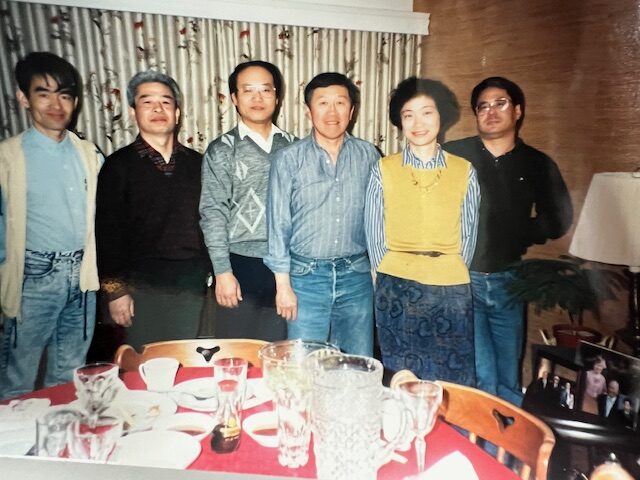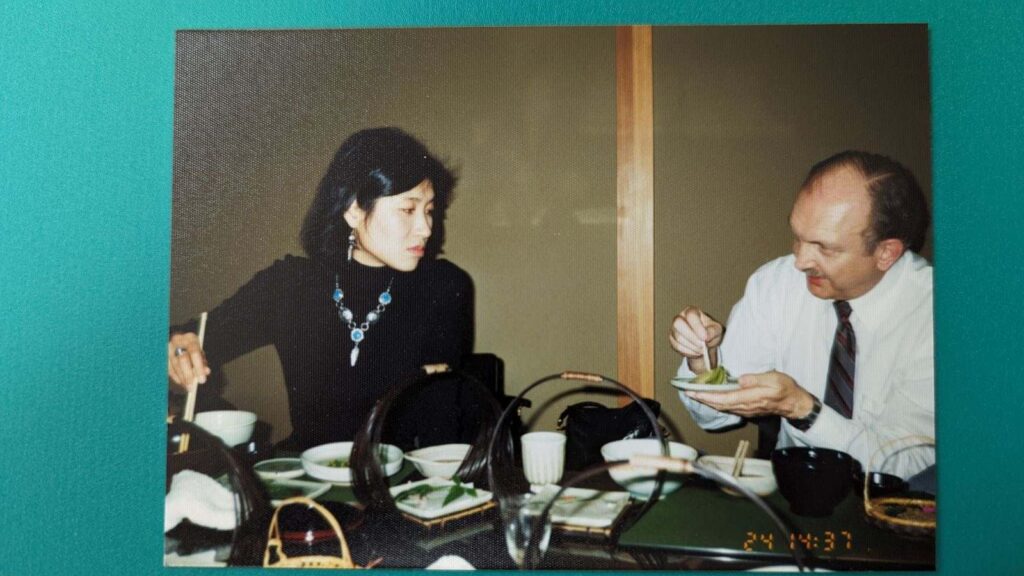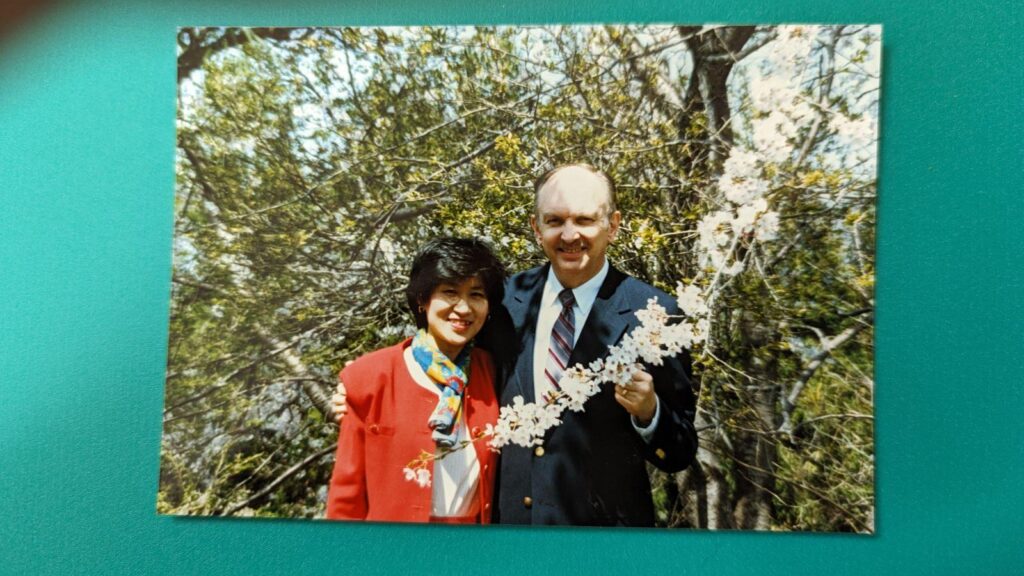In her kitchen, Keiko “Kay” Rohrdanz pours tea into small mugs decorated with blue leaves. Her two Dobermans circle around her, eager for a taste of the cake she’s putting onto a plate. Her home is a mix of traditional Japanese and American décor, and she radiates hospitality as she sits down with me and one of her closest friends, Vivian Goodner.

The two met many years ago in Rohrdanz’s hometown of Tokai-Mura, more than 5,000 miles away on the east coast of Japan. Goodner traveled there with a group of visiting scientists.
“The nuclear community is small enough as it is,” said Rohrdanz. “So these cross-cultural connections were very dear to us. It’s rare that people in the community get to know each other well, much less our families and cultures.”
Rohrdanz and Goodner have remained close friends since moving back to the United States.
Tokai-Mura is in many ways a mirror image of Idaho Falls. Not only is the city the site of a prominent nuclear lab, but it also boasts a thriving agricultural community based on sweet potatoes.
These economic and cultural similarities led the two cities to form a sister cities partnership in July 1981 to exchange fellowship and friendship. Every other year, a delegation from Tokai visits Idaho Falls; the following year, an Idaho Falls delegation visits Tokai.
The sister cities partnership is just one example of the close relationships that have developed between Japanese visitors and INL employees throughout the lab’s 75-year history.
Scientific exchange
The close relationship between Idaho Falls and Japanese researchers dates to at least the 1960s. An old sign for the Zero Power Physics Reactor bears signatures from Japanese dignitaries. In fact, numerous Japanese scientists visited early reactor experiments, including the Zero-Power Physics Reactor, Experimental Breeder Reactor-II (EBR-II), and the Integral Fast Reactor (IFR).
In the early days of the IFR program, Sadao Hattori of Japan’s Central Research Institute of Electric Power Industry visited what was at the time called Argonne-West (what is now known as INL’s Materials and Fuels Complex) to receive a technical briefing and facility tour. He was so impressed with the reactor’s potential that he arranged a full-day IFR program presentation in Tokyo in 1987.

The audience included Ryo Ikegame, an executive vice president for Tokyo Electric Power Company. His support led to a signed contract with the Department of Energy that in 1989 established a joint program between the United States and Japan for IFR research. Originally, the contract scope was limited to fuel pyroprocessing research to recycle spent fuel. Two years later, it was expanded to incorporate Japan Atomic Power Company. This also broadened the scope to include fuel cycle demonstrations in Argonne-West’s Fuel Conditioning Facility.
“The few years that we collaborated with the Japanese utilities were among the highlights of my career,” said Charles Till, head of the IFR project, in his book “Plentiful Energy.”
The IFR program made its own impact on nuclear history. “IFR proved that we could design nuclear plants to be safe under even the most extreme of conditions,” said Harold McFarlane, an IFR researcher from Argonne-West.
The technical exchange between the U.S. and Japan enabled by the IFR program has had far-reaching impacts on our clean energy future. For example, as the Argonne-West site conducted research with IFR and other reactors, Japanese nuclear scientists continued to innovate back home. The country is home to one of the only power reactor facilities that can run fuel at high temperatures. In collaboration with Argonne scientists, Japanese researchers developed a unique system for identifying failures in reactors. This system involved running certain simulated failure conditions to see how the reactor behaved and how it could improve. This experimental methodology can be seen today in INL’s Transient Reactor Test Facility.
One of the visiting Japanese scientists, Satoshi Tani, was present for the lab’s first single transient test. He recalled his experience in a document reporting on Japanese scientists’ experiences working for Argonne-West.

“I stayed in the control room of EBR-II and I was a little bit nervous,” he said. “We were very glad to see that the reactor power was perfectly controlled. I learned quite a lot from U.S. researchers, not only the technical aspects but also the way of thinking. I am sincerely thankful to all of them.”
The partnership with the Japanese Atomic Energy Agency continues today. Currently, researchers at INL are preparing experiments using the Transient Reactor Test Facility to test fuel from several reactor designs, including the mixed oxide fuel samples used in Japanese fast reactors.
Cultural exchange: Idaho to Japan
For some people, this cultural exchange changed their lives. Rohrdanz worked for what is now the Japan Atomic Energy Agency, which was then known as Japan Atomic Energy Research Institute, or JAERI. She met Bob Rohrdanz when he was a visiting scientist to Tokai-Mura from what was at the time known as INEEL – the Idaho National Engineering and Environmental Laboratory. They fell in love, got married and moved back to Idaho Falls.
According to Kay Rohrdanz, JAERI ensured that these visiting scientists felt welcome and at home in Japan. They had a housing complex just for them, with furniture and kitchen, dining and bathroom facilities that aligned more with what the visitors were used to in the U.S. When Goodner traveled to Tokai-Mura she received language and culture lessons from the wife of a Japanese dignitary in Idaho Falls before they traveled abroad.

Cultural exchange: Japan to Idaho
Japanese visiting scientists to Idaho Falls were also warmly welcomed, in particular by a local couple with ties to Japan, Jun and Taka Nukaya. Jun worked at Argonne at the time and was asked to help with interpretation for visiting scientists. He quickly recommended his wife, Taka, who he said had a much stronger Japanese fluency, for the task.
The child of Japanese immigrants, Taka Nukaya, who died in 2023, studied the language at the Buddhist church in Ogden, Utah. Having served as an interpreter for her parents when she was younger, she honed her skills supporting cultural connection from a young age. Beginning in the 1970s, Taka Nukaya quickly became a key figure in the cross-cultural exchange between Idaho Falls and the laboratory’s visiting Japanese scientists.
According to her daughter, Lisa Scott, Taka Nukaya helped the scientists for almost 30 years by interpreting for them in numerous situations: at doctors’ offices and car dealerships, at parent-teacher conferences, and as they worked to obtain certain legal documents, like driver’s licenses. She tutored many of their children in English and gave the visiting scientists advice for how best to enjoy their free time in Idaho. One family even called Taka Nukaya from a hospital in Denver when their son was in a serious accident to interpret between them and the doctors.
Scott fondly recalls meeting many of the visiting scientists while growing up. Her parents’ door was always open. They enjoyed Taka Nukaya’s delicious and authentic Japanese cuisine, her advice for navigating personal and business culture in Idaho Falls, and her excellent company.
“My mother was a firm believer in the exchange of cultures and building bridges between our community and the Japanese visitors,” said Scott. “In a sincere but humorous manner, she taught them the importance of eye contact and a firm handshake in the U.S. business world. She believed in building strong relationships that extended across workplaces, cultures and ways of life.”
Today, the Idaho Falls-Japan relationships still exist. Near Idaho Falls’ downtown and Snake River walking path sits the Japanese friendship garden, which incorporates roof tiling and stone lanterns gifted by Tokai. In Tokai-Mura, there is a building called the “International House,” designed by architects who had visited Idaho Falls and were inspired by the houses in the city’s Stonebrook neighborhood.

Another visiting scientist, Seiichiro Maeda, fondly recalls being out west and seeing Yellowstone National Park. “We felt the vastness of space when I drove at a long straight road extending to the horizon,” he said. “The stay at Argonne-West was a very good experience for us not only in business but also in private. I am grateful for our many good memories.”







